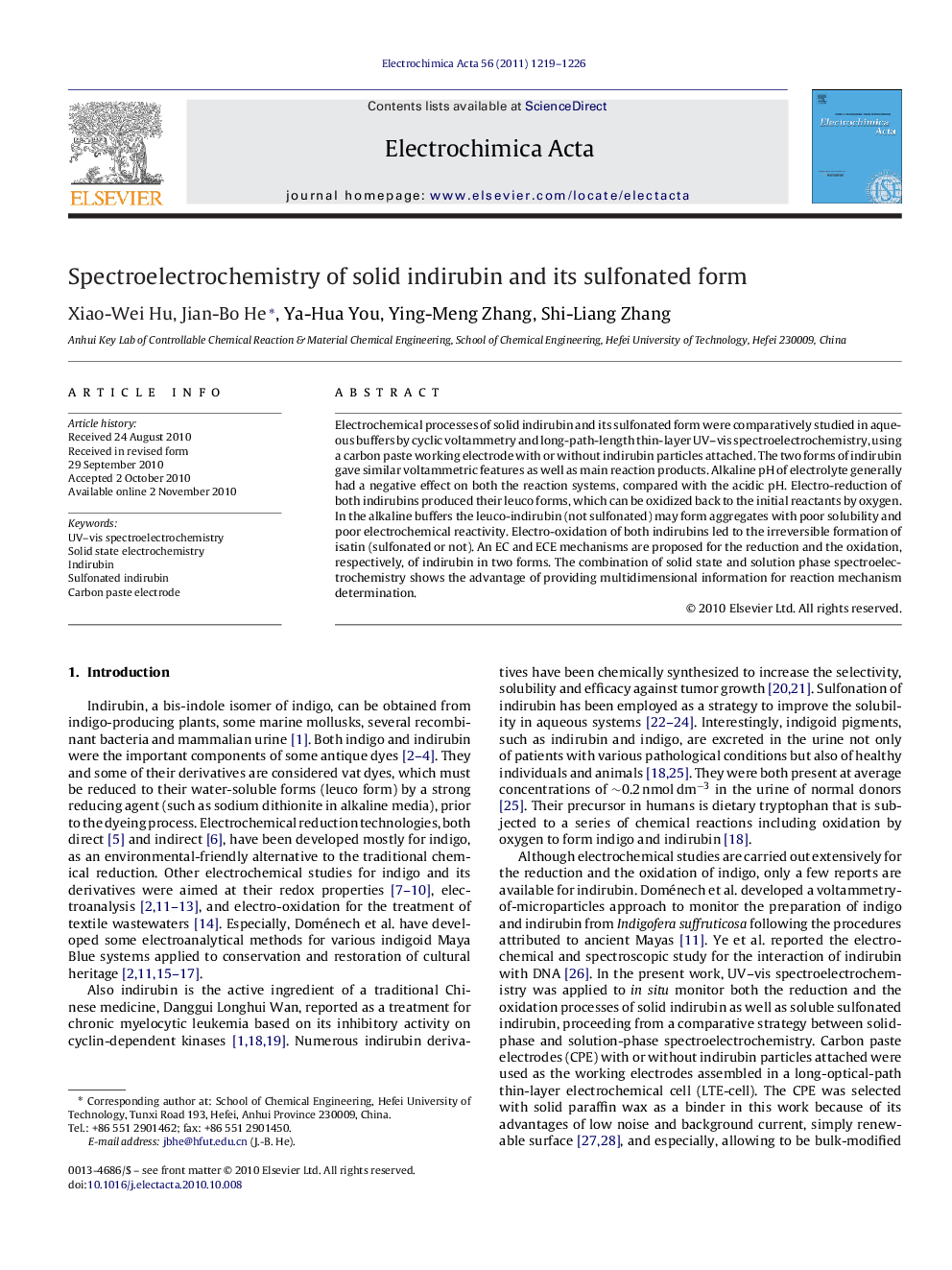| Article ID | Journal | Published Year | Pages | File Type |
|---|---|---|---|---|
| 191397 | Electrochimica Acta | 2011 | 8 Pages |
Electrochemical processes of solid indirubin and its sulfonated form were comparatively studied in aqueous buffers by cyclic voltammetry and long-path-length thin-layer UV–vis spectroelectrochemistry, using a carbon paste working electrode with or without indirubin particles attached. The two forms of indirubin gave similar voltammetric features as well as main reaction products. Alkaline pH of electrolyte generally had a negative effect on both the reaction systems, compared with the acidic pH. Electro-reduction of both indirubins produced their leuco forms, which can be oxidized back to the initial reactants by oxygen. In the alkaline buffers the leuco-indirubin (not sulfonated) may form aggregates with poor solubility and poor electrochemical reactivity. Electro-oxidation of both indirubins led to the irreversible formation of isatin (sulfonated or not). An EC and ECE mechanisms are proposed for the reduction and the oxidation, respectively, of indirubin in two forms. The combination of solid state and solution phase spectroelectrochemistry shows the advantage of providing multidimensional information for reaction mechanism determination.
